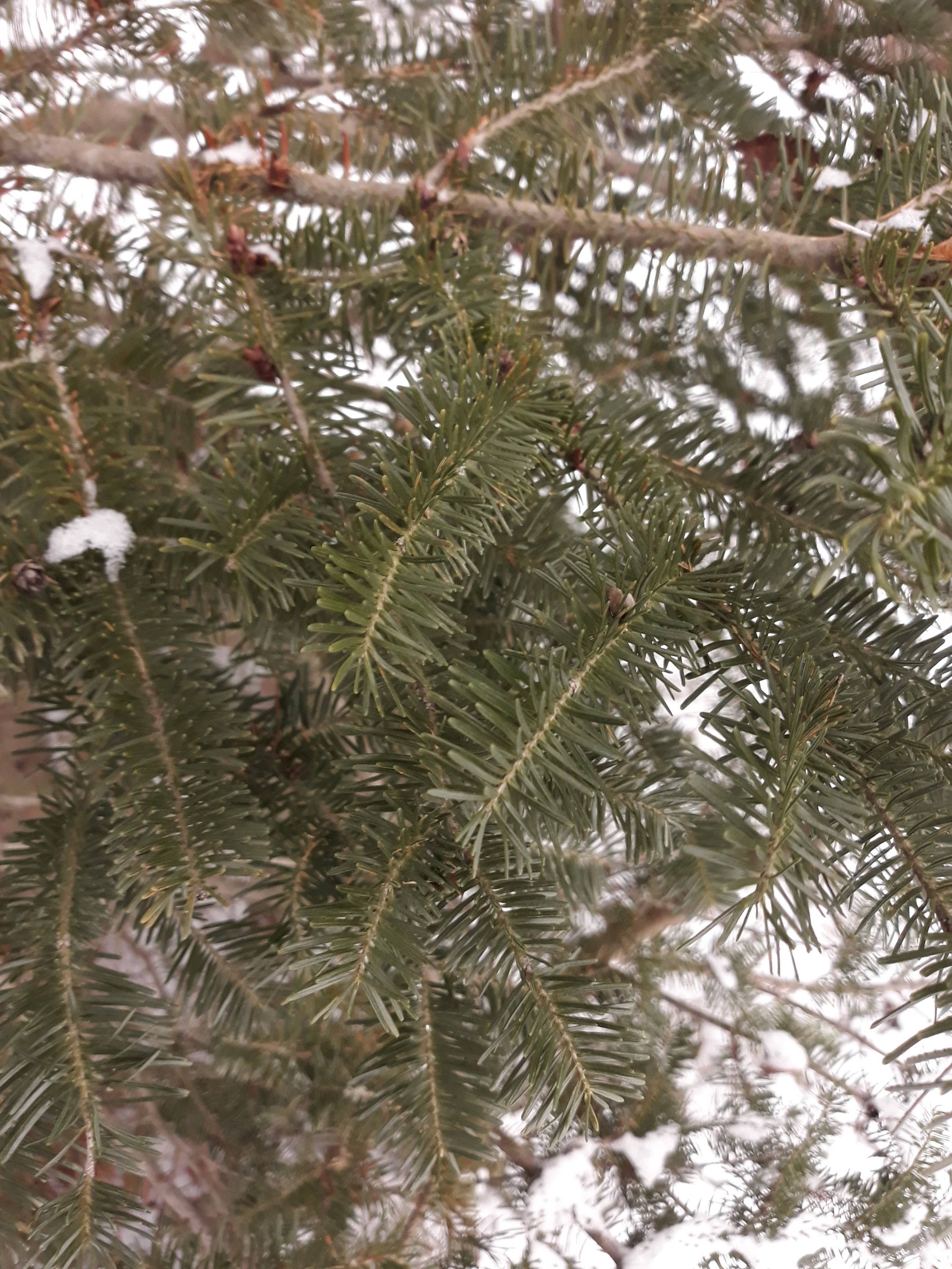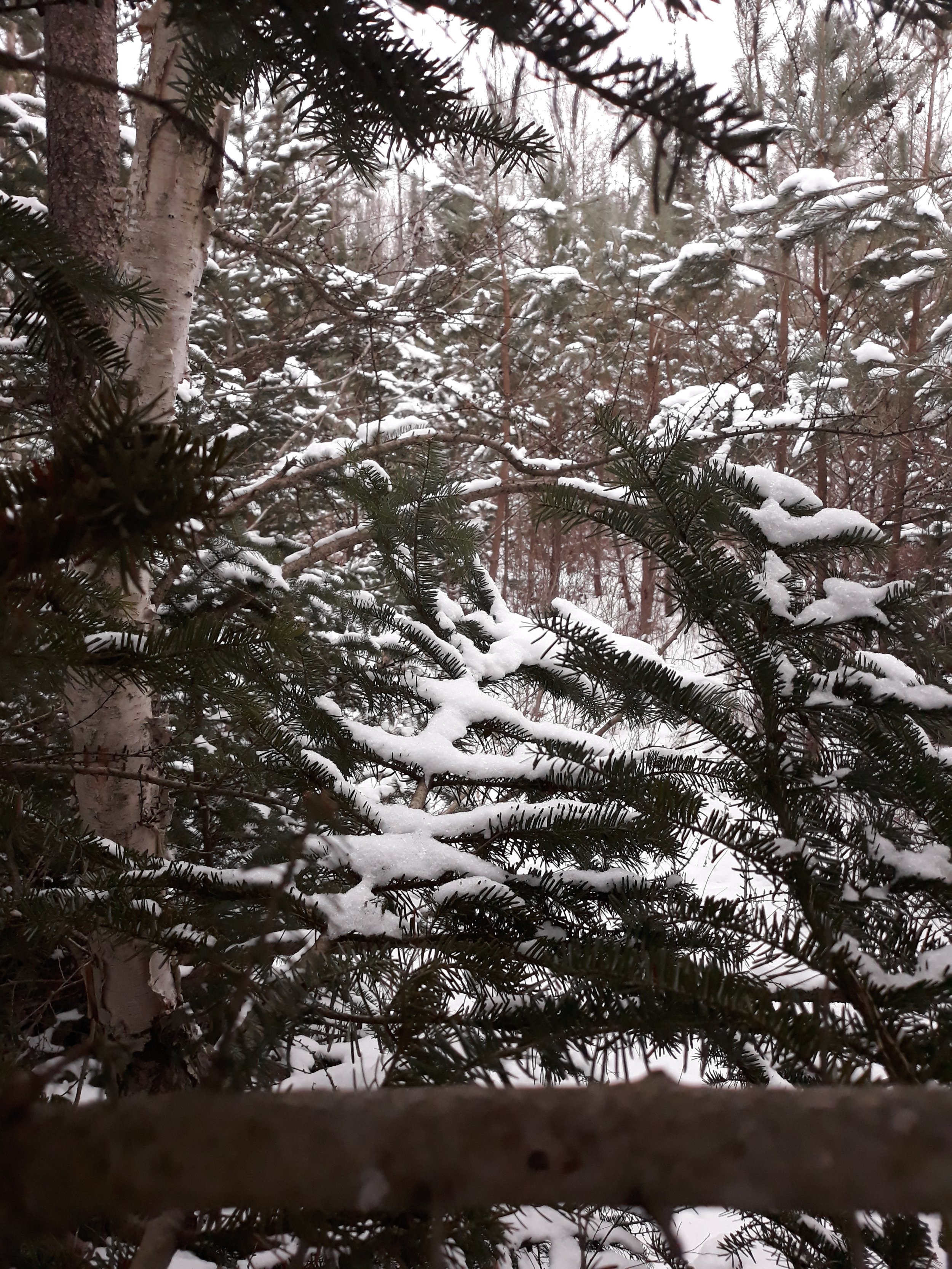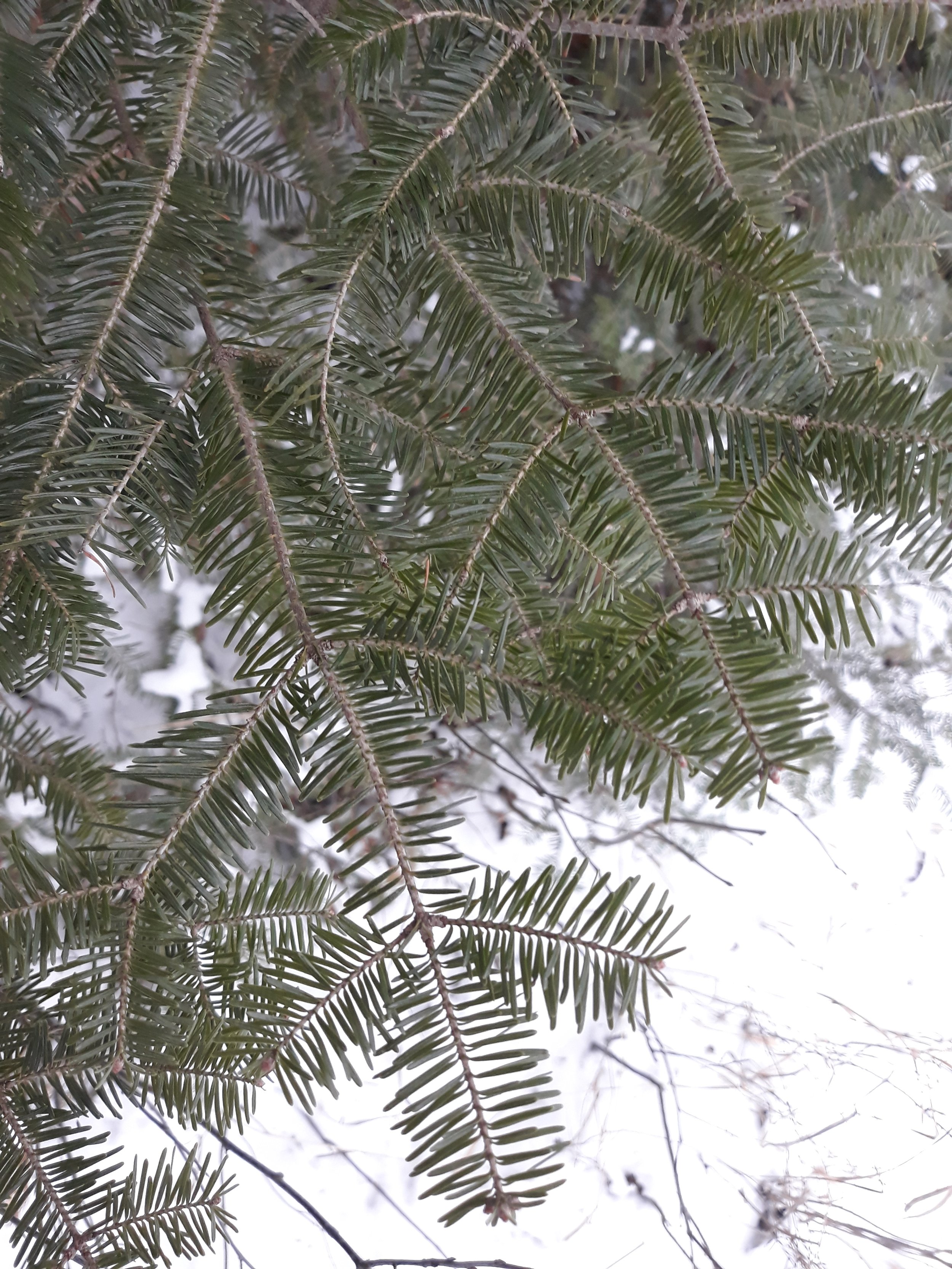Tree Medicine: Balsam Fir/Abies Balsamea
Balsam Fir, freshly harvested and awaiting distillation.
A member of the Pinaceae family, subfamily Abietoideae, Balsam Fir belongs to the genus Abies. This genus arose during the Mesozoic era, and based on genomic sequencing of its members is believed to have originated in North America, and spread to Eurasia. This genus encompasses about 50 different species of fir. Although sharing the same last name, Douglas Fir does not share the same genetic lineage as other firs and is part of the pseudotsuga genus, another distant relative within the Pinaceae family. The abies genus has a long history of medicinal uses around the world in the regions it is distributed. The fir genus is a rich source of bioactive compounds with high therapeutic potential.
The trunk of an adolescent Balsam Fir, note the small bulges in the bark- these are the blisters filled with the oleoresin. Younger trees lack blisters, and older trees bark eventually grows thick and the blisters older trees will still have blisters, but often so high up on the that they can’t be reached.
All parts of the Balsam fir are medicinal, from the leaves, to the oleoresin, to the bark, but each contains a slightly different range and concentrations of bioactive compounds. Differences in concentration of particular chemical constituents can be attributed to geography, soil type, age and health of the specimen and time of year harvested, but generally remain roughly the same.
Gas chromatography has revealed that the essential oil extracted via hydrodistillation is composed of mainly monoterpenes (up to 96%), with the most prominent being beta-pinene, delta-3-carene, alpha-pinene, bornyl acetate, limonene and b-phellandrene, with dozens of other monoterpenes occurring in minute levels. These chemical compounds give the oil its antibacterial, antiseptic, anti inflammatory, and antioxidant pharmacological properties.
Balsam Fir cones stand erect on the branch, conversely, spruce cones hang below the branch. Cones are often dripping with resin and are a beautiful deep purple color in person. Needles in full sun will reach up towards the light, while lower needles are often laying flat along the twigs.
Despite both being attained through hydrodistillation, the essential oil and hydrosol are not identical. The hydrosol is able to pull out chemical constituents with high degrees of water solubility, while they often share many compounds in different levels, other compounds many only occur in either the oil or the hydrosol, not in both. The hydrosol of Abies balsamea (Balsam Fir) is composed mainly of alpha-terpineol, with lower levels of borneol, maltol, bornyl acetate and camphor.
Balsam Fir and Red Maple in autumn in Northern Michigan.
Balsam fir resin is yet another substance derived from the Balsam Fir tree. Found in blisters on the trunk of young trees, it has antiseptic, antiviral, anti-fungal, antibacterial, oxygenating, immune boosting properties. The resin is composed of a range of monoterpenes, sesquiterpenes and diterpenes. Alpha-pinene, beta-pinene, limonene, beta-phellandrene, myrcene, and geraniol being the most prominent. The undiluted resin was used extensively by the indigenous cultures of North America for the treatment of severe burns, cuts and a wide variety of skin ailments for its ability to seal over the injured area and keep it clean and sealed while the skin regenerates. We distill Balsam Fir for its essential oil and hydrosol, infuse balsam fir leaves in many of our products, as well as harvest balsam fir resin for use in several products.
In spring, new tips appear from buds the tree forms the previous fall. New growth stays bright green through much of the summer. Most branches only grow an inch or two per year.
Balsam Fir/Abies Balsamea
Anishinaabemowin: Nimesenh “older sister”, Ingiigido’aag “She stands at prayer for us”
Size: Medium sized tree, 30-75ft tall, Slender pyramidal shape, in thick stands dead branches will hang on the lower sections of tree. Double tops common in thick stands. Slender and symmetrical.
Needles: 2-3 cm long, flat, highly aromatic. Bottom appears lighter due to the lines of stomata. Needles spiral slightly around the twigs, but appear flat. Branching is highly symmetrical. Needles are attached to twigs with a “suction cup” look, while spruce needles are attached to the branch on “pegs”.
Bark: Smooth on young trees, adolescent trees develop the characteristic sap blisters, as the tree ages, the sap blisters disappear and the bark becomes scaly.
Cones: Young cones are erect on the top of the tree (unlike spruce cones which hang down), deep purples and dripping with resin when young. Unlike spruce cones, mature cones rarely fall to the ground before animals have made a meal out of them.
Habitat: Found spanning the boreal forests of North America down the the northern edges of the temperate zone, Balsam Fir inhabit a variety of habitats, from cold poorly drained swamps, to well drained uplands. Frequently found along small lakes and streams growing near Eastern Hemlock and White Cedar. Also often associates with Michigan’s native spruce varieties.
Distribution: Common in the northern half of the lower peninsula. Widespread in the upper peninsula. Native stands rare in southern half of lower peninsula, but often used in landscaping.
Below: Photos of Balsam Fir in winter.
Another fir tree you may see in landscaping is the White Fir. These trees have super sized needles that look similar to balsam fir needles in that they are flat and share the same branching pattern, but the needles are much larger, more silver-gray and the tree smells reminiscent of Pine-sol, with lemony undertones. White Fir also produces sap blisters, but the scent of the sap is also very much like Pine-sol.
White Fir/ Abies Concolor
Size: 30-60 ft tall, less pyramidal shaped than Balsam Fir, more open branching.
Needles: Silvery blue to grey, 4-7 cm long and flat. Horizontal on branch. Attached to branch with “suction cup” type attachment. Needles smell strongly of pinesol, or a more lemony pine scent.
Bark: Smooth, dark gray, similar resin blisters to Balsam Fir.
Habitat: Well drained upland soils.
Distribution: Native to Rocky Mountains, used commonly in landscaping.
One of our massage oils which features an evergreen infused oil as the base, along with hand harvested balsam fir resin.
How to make an evergreen infused body oil:
Making herbal infused oil is a great place to start working with evergreens. You can use this alone for a body moisturizer or bath oil, or use it as the base for a salve or other oil based products. Using dry plant material for the infusion is highly recommended- wet plant material will introduce moisture into the oil and shorten its shelf life and can potentially cause it to go rancid before your oil is even ready. Dry plant material won’t cause any problems like this. Break up, cut or grind your dried evergreens into small pieces or powder- the more plant surface area available the more potent the infusion will be. A large twig of an evergreen suspended in an oil will look lovely while infusing, but will not be as easy for the oil to extract the beneficial properties as using small pieces/powdered needles. More surface area=better extraction.
2-3 cups dried evergreens (cut up or ground into small pieces) we recommend Balsam Fir, Hemlock and Cedar.
3-4 cups liquid carrier oil of choice
Fill a mason jar about halfway with the prepared plant material and pour oil over top, cap, and set on a shelf or sunny windowsill and shake daily for 4-6 weeks, strain, return to jar and label and date for future use. You may also heat infuse the oil for faster results- in this case put the sealed jar into a crockpot filled with water on low heat (or warm setting depending on how hot your crockpot tends to get on low) and allow to infuse for several hours or overnight. Try them both and see which you prefer!
Notes: Carrier oils- some great choices for a body oil are almond, grapeseed, apricot kernel, safflower, and avocado oil. Avoid sunflower seed oil- it has a very short shelf life and goes rancid much faster than other oils. You want your infusion to have the longest shelf life possible!
References:
Pichette A, Larouche PL, Lebrun M, Legault J. Composition and antibacterial activity of Abies balsamea essential oil. Phytother Res. 2006 May;20(5):371-3. doi: 10.1002/ptr.1863. PMID: 16619365.
Coté H, Boucher MA, Pichette A, Roger B, Legault J. New antibacterial hydrophobic assay reveals Abies balsamea oleoresin activity against Staphylococcus aureus and MRSA. J Ethnopharmacol. 2016 Dec 24;194:684-689. doi: 10.1016/j.jep.2016.10.035. Epub 2016 Oct 18. PMID: 27769946.
Semerikova SA, Khrunyk YY, Lascoux M, Semerikov VL. From America to Eurasia: a multigenomes history of the genus Abies. Mol Phylogenet Evol. 2018 Aug;125:14-28. doi: 10.1016/j.ympev.2018.03.009. Epub 2018 Mar 15. PMID: 29551520.










